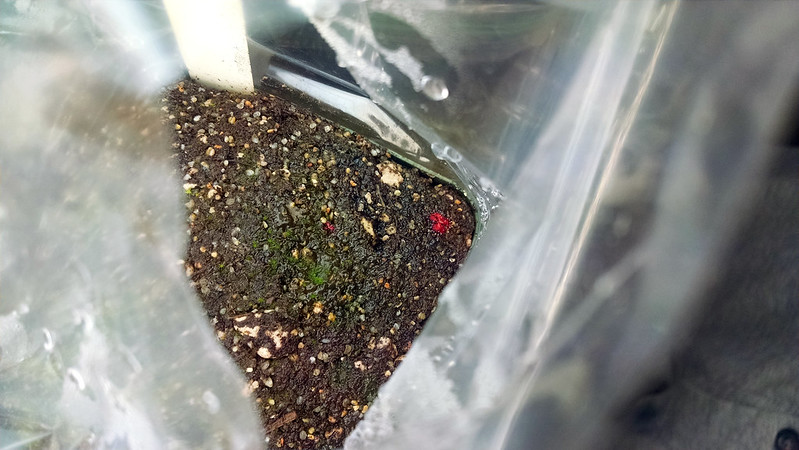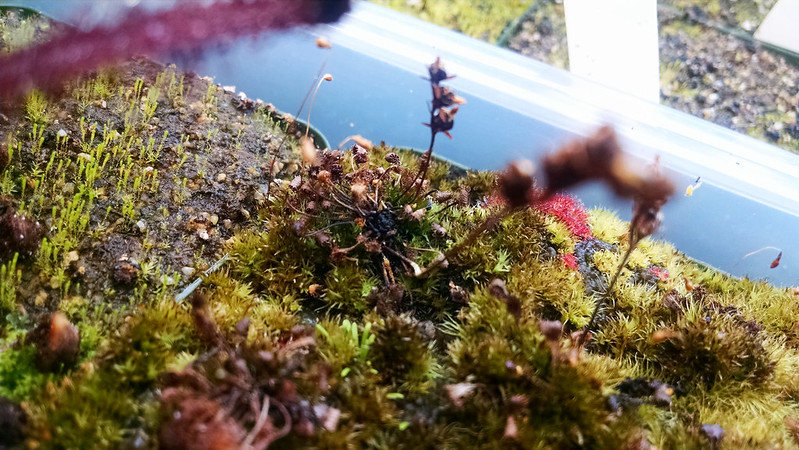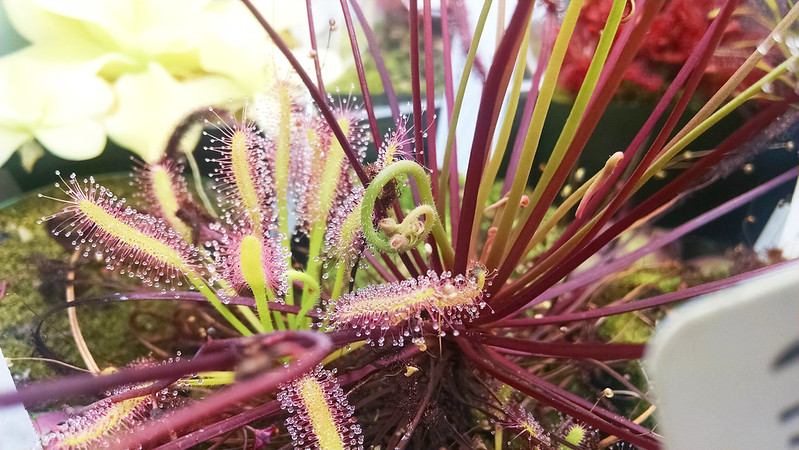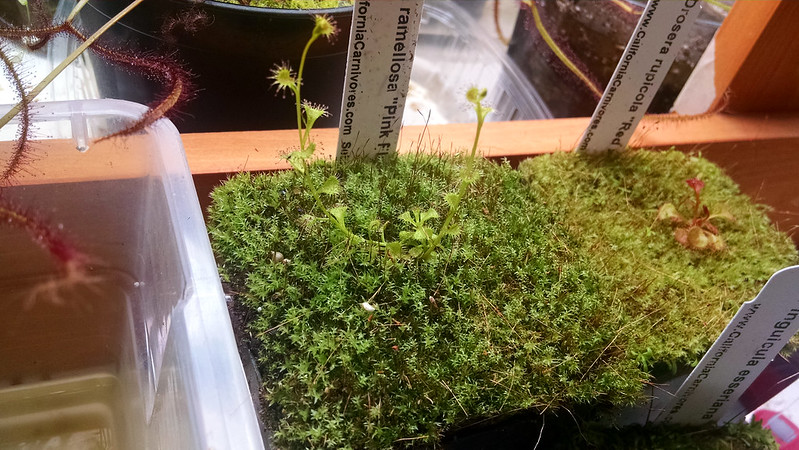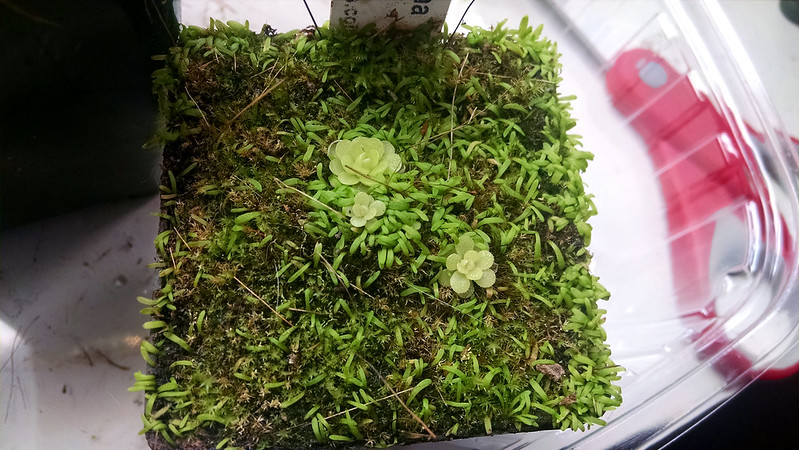For the last couple weeks my pygmies have been producing lots and lots of gemmae. Last year I threw a lot of gemmae out, so this year I determined to do better. I've shared some with friends, and I've also sold a lot of gemmae, mostly via Facebook. Here's what I shipped out this morning!
 |
| Lots of stuff headed to the post office. |
This is a non-trivial amount of work!
Last year I learned that gemmae that have been harvested and packetized have an extremely short shelf life, so now I harvest per order. I put on a podcast and it's nice, but it takes time. I don't mind though, because I really like spreading different plants around. It's sort of an insurance policy – inevitably I'm going to lose some plants, and if more people are growing them it will be easier for me to get them back later.
Freshly-harvested pygmies look funny.
 |
| Drosera leucoblasta with gemmae (and recently-harvested). |
I've still got a good amount of gemmae left, including
Drosera leucoblasta,
Drosera sargentii,
Drosera paleacea,
Drosera callistos, and
Drosera helodes, among others. If you'd like to get some, email me at
sundews.etc@gmail.com. I've been charging $5 per pack, with $3 for basic shipping, and various options for cold weather. Let me know!
Besides pygmies and gemmae (and pygmies and gemmae and pygmies and gemmae), I've been spending a fair amount of time thinking about utrics lately. My
Utricularia longifolia is blooming again!
 |
| Blooming U. longifolia. No aphids this time! |
I guess this is just the time of year for it. Last year it I
first noticed the bloom in mid-February. My clump is a bit more mature now. I should have taken a picture of the bottom of the pot – it's a solid mass of stolons and traps. It's pretty funny. Maybe this year I'll pot this up into a much larger pot – I've been threatening to do that for a while. I gave a chunk to my friend Anne, who will be growing it outside. Interested to see how it does!
I haven't killed my
Utricularia cornigera! That's exciting!
 |
| Brand new leaf! I'm very happy. |
As I've mentioned before, this pot had gotten much too dry and had lost all it foliage. However, it still had a big fat stolon, which I buried in the pot once I moved it to a wetter tray. Looks like we've got life now! I should fertilize this a bit once it grows in.
At the recent BACPS meeting I picked up a new tuberous sundew, the delightfully-named
Drosera zigzagia.
 |
| One of the best specific epithets in the genus. |
I've gotten a new burst of confidence re: tuberous
Drosera since my
Drosera ramellosa came back from dormancy. Gotta get all the tubers I can now.
Something more to add to my confidence in growing the summer-dormant species is the fact that
Drosera cistiflora is back as well.
 |
| Arise! Awaken! |
There was a little dried out nob on the pot where the old stem had been, and when I flicked it away I exposed this bit of stem to the lights, so it's growing! Now I really really want to get it to flower for me. That would be a real feather in the cap! We'll see.












